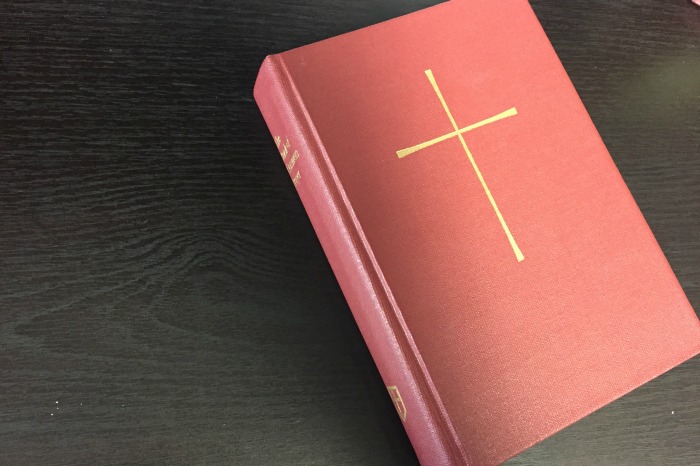For many, the Book of Common Prayer is a source of continuity and comfort. What they rarely recognize is that it is a radical, world-changing document.
Written and updated by Thomas Cranmer, Archbishop of Canterbury (1533-1556), the Book of Common Prayer, or BCP was a radical invention formed of a radical time.
England, thoroughly enmeshed in another of the church’s revolutionary wars, was guiding it’s national church into the stormy waters of the Great Reformation. The hope was most certainly to survive. Survive and welcome both the radical ideas of the reformers and the tradition of the medieval church. A consensus named and clarified long after Cranmer’s execution. That’s a whole other thing, by the way.
The BCP, would become that centering agent. It would be its destiny. And its curse.
The Moment.
Cranmer struck the iron at the right moment. It is entirely irresponsible of the present church to speak of the BCP without the history surrounding this moment. That the mainland was engulfed in violence and war over the Reformation and that England was similarly swept up. And without the strength of Henry VIII to keep it at bay, the violent swings of protest and repression would tear the British Isles apart.
But it wasn’t just a reformation of ideas and beliefs and practices. It was a reformation of power and access.
Before the reformation, worship was made in a language not our own, hidden behind rood screens, and without much interaction with the people. Who were nearly all illiterate. In fact, literacy was so low, many priests were illiterate. They served through memorizing liturgy in a foreign language.
The printing press changed that. Suddenly, people had cheap access to books and learned to read them. And the first thing they had access to was the Bible.
This is the world Cranmer’s BCP was written in: a world in which the people suddenly had access to the divine through new technology and a transforming understanding of how we learn and practice our faith.
We focus on Luther, Calvin, and justification by faith, but the real transformation came by putting Bibles and prayer books in people’s hands.
Common Prayer.
So what is radical about the BCP other than it’s existence?
That it was intended to be common. In both senses of the word.
- Common prayer for all the people.
- And prayer for the people in their common language.
And many Anglicans fail to hold these two in balance.
Written in the common tongue of the people, Cranmer drew from the major liturgical resources of the time, from the Latin service books, Greek liturgies and Gallican rites, and Luther’s German forms. The BCP was historic and modern, Catholic and Protestant and Celtic, and it was written in the local language. It wasn’t just the worship book for the priest’s study, but for the laity’s nightstand and breakfast table.
It was written to be used by common people in their common language.
This idea is just as revolutionary today as it was then.
We desire uncommon prayer.
Vivid and vibrant images and soaring language. Prayers which rise like incense and our hearts to soar at their beauty.
We don’t think common words can achieve those heights. We need brilliance. A true poet, second only to Shakespeare.
We long for prayers we dare not alter and diction so precise it pings into place. We want our “thees and thous” and our persistent changelessness embodied not in an almighty God, but in an all-mighty prayer book, unstoppable and never, ever changing.
Prayers in modern vernacular, written by local priests and laity? That’s so…common.
Only uncommon prayer can lift our hearts!
we argue.
We mistake Cranmer’s genius as undeniable and unchangeable. Forgetting of course how the church updated them in 1662, over a century after his execution. But then, in England, No more changes!
His genius isn’t found in the thees and thous but how he made the common language of the age beautiful and useable. They were functional and powerful. Each is rich with theology and blend multiple streams of theology into one.
Cranmer’s genius was to write a book for everyone.
One we could pick up and in it see ourselves. That we might say this is my church regardless of our theological origins. A radical oneness in common worship, not belief or doctrine. Not in sameness alone, but in shared real estate around a table and at a font.
Every attempt to silence this genius or refusal to acknowledge its radical character is a means of subverting and destroying the book we claim to love.
Most of us who are smitten with the richness of Elizabethan language refuse to acknowledge how uncommon it is, how unlike our breakfast table and nightstand it is. We misplace our trust in thees and thous and how many theological cocktails we can kick back without noticing how far past their expiration date they are. And worst of all, we are blind to its many linguistic and theological shortcomings in light of our needs.
In seeking to protect it, we stand against its genius. And we radically cast aside it’s call to revolution that we might escape into transcendence rather than engage in the divine imminence of a God who can be worshipped in the nature of our language and in the presence of our friends and families. Potentially missing the profound sense that worship purely engaged will go beyond beauty; that we might discover these words aren’t another’s, but our very own.
The Book of Common Prayer was a technological revelation born of a revolution. It’s creator seized a miraculous moment.
The next moment is fast approaching.

